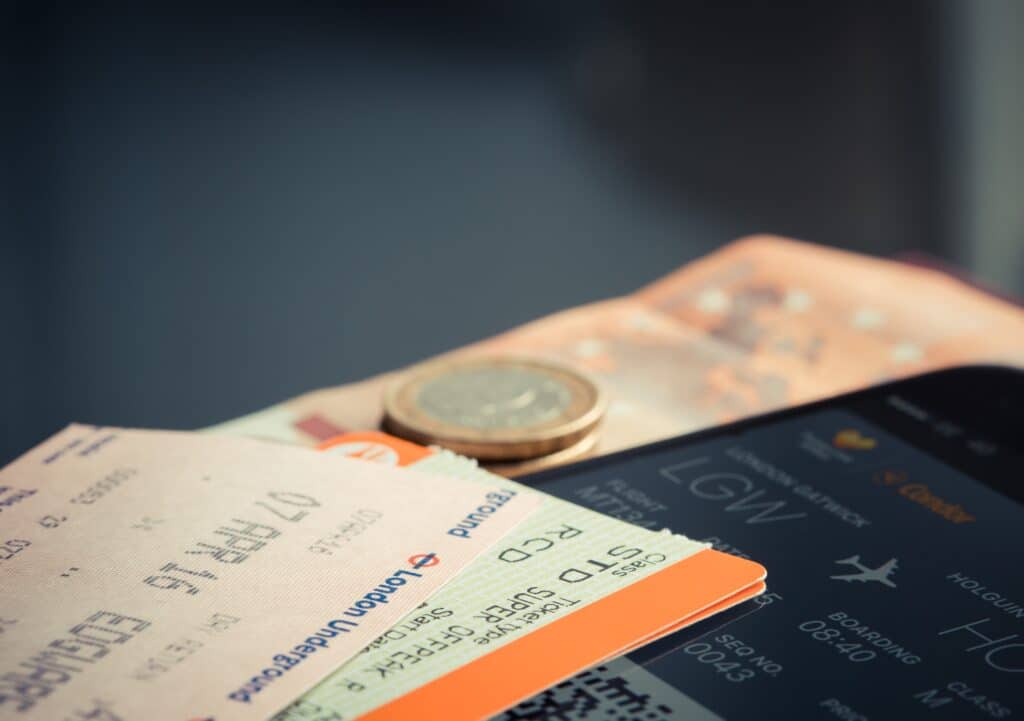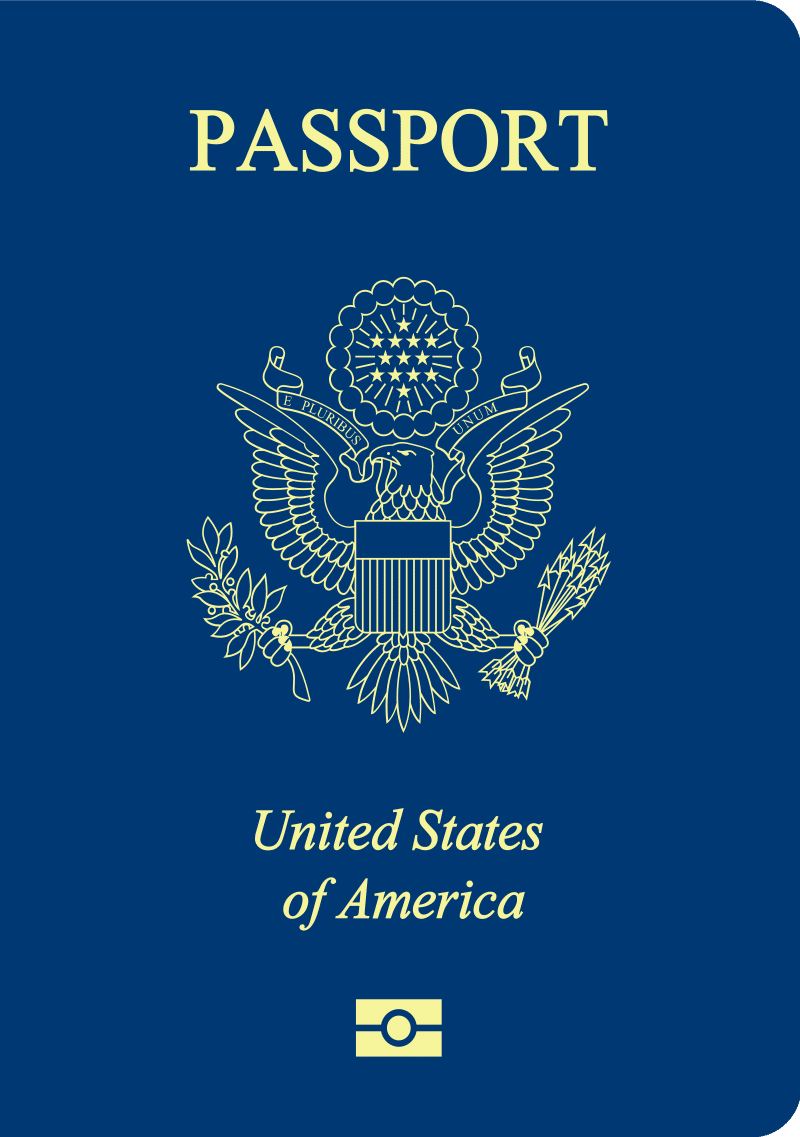If you’re getting ready to take your first family travel adventure with kids, you’re probably wondering – what, exactly, do I need again? Let’s face it: Children’s travel documentation is complicated and often difficult to navigate for inexperienced travelers.
While the specific set of travel documentation needed will vary based on where you’re going, what your relationship status is, and how old your child will be at the time of travel, in today’s post, we’ll help you build a list of children’s travel documentation that will cover just about any scenario you could encounter.
Ready? Let’s go.
Children’s Travel Documentation 101
Getting a Passport For Your Child
We get it. Getting and maintaining a passport for a minor child is expensive and can be downright painful if your relationship is iffy with your co-parent. Still, a passport is the gold citizenship standard.
While you may be thinking, “Hey, I’m only planning to travel domestically,” the rules for domestic travel and children’s travel documents have become increasingly more complicated in the age of real ID and increased awareness of child trafficking.
A passport is a grade A government-issued seal of one’s identity, and it’s the ultimate anchor of all other travel documentation for kids when the issue arises because of the rigorous review of minor child applications. Just get a passport.

What’s The Process to Get a US Passport For A Child?
If you’ve ever gotten a passport for yourself, you might be fooled into thinking it’s just as easy to get one for your child; after all, you are their parent, right? Think again. Children’s travel documentation is a whole new ballgame.
It helps to think of the process in three stages:
- Reviewing and gathering the information you’ll need for the passport application.
- Setting your appointment at your local passport agency. In the US, both parents or legal guardians must be present with the child when applying.
- Selecting the right processing time for your estimated departure date.
Failing to do any of the above will leave you high and dry on travel day.
Gathering your supporting documents
The basic documentation for obtaining a passport for a minor is straightforward; you’ll need a notarized copy of their birth certificate or adoption certificate and a social security card. You will also need your marriage certificate if you were married at the time of the child’s birth and a divorce decree if you have since been divorced and changed your last name.
If your child’s other listed parent has passed away, you will need a certified copy of their death record and your marriage certificate.
Here’s where it gets tricky for some if your child’s other parent is living but they refuse to give permission, can’t attend in person due to extenuating circumstances, or can’t be found, you’ll have a few extra steps you need to take.
Residence custody is NOT legal authority. I see parents make this mistake all the time. Just because you have a specified custody agreement with your co-parent that the child lives with you does not give you legal authority to obtain a passport without the other parent’s permission, consent, and attendance.
If this is the case for you, contact a family attorney and tell them that you need assistance obtaining children’s travel documentation and the circumstances.
How to file a passport application for your child
Once your documentation is all together and you’ve checked, double-checked, and triple-checked, it’s time to start the application process. You can start your application online via the U.S. Department of State’s website. Once you’ve completed all the forms, you can print them off and have everyone sign them. Keep all of your paperwork together.
When it comes time to make the appointment to submit the travel documentation requests, you should have a few options: an appointment at a passport agency or a passport acceptance facility. When I took my children, I made my appointment at my local post office, an acceptance facility, because I also needed passport photos, and they do both.
When I started, the earliest appointment they had was 5 weeks out from the day I booked. With the easing of the pandemic, many Americans are now looking to get or refresh their travel documentation, and the wait times are getting longer. Don’t forget to check with and invite your co-parent.
The day of your child’s travel documentation appointment
Be on time. Be prepared. There is 0 use arguing with a passport acceptance clerk if you’ve forgotten a piece of paperwork or if you’re late when there’s a line out the door. Be prompt. Be prepared.
When they’re done reviewing your application and everyone’s paperwork, you’ll be asked whether or not you want to expedite the passport for an additional fee or use the normal processing time. As of this writing, it’s currently taking upwards of 13 weeks for normal processing and 9 for expedited.
I recommend you expedite if you plan on traveling within 6 months of your appointment, just in case something gets lost, delayed further, or needs to be redone. My ex-sister-in-law almost missed her honeymoon because they lost her application in the mail for 5 months, including her birth certificate and social security card.
That’s it! Now, all you have to do is wait for it in the mail and renew it every 5 years.
Preparing For Your Trip: The Children’s Travel Documentation You’ll Need For The Journey
Whether you have a passport for your child or not, you’ll want to be prepared when the big day arrives. Child trafficking and kidnapping are a serious and unfortunate reality in our world. During the trip, you will get extra scrutiny from various government and security agents.
The good news is that if you did apply for a passport for your child, you’re already ahead of the curve on what you’ll need to bring when you’re traveling because you already packaged it up for the passport application.
What travel documentation to bring if you’re traveling with your minor child
- Your child’s passport, and your own passport.
- A notarized copy of their birth certificate to demonstrate the parental relationship.
- Any notarized court orders showing that you have full legal rights to the child through termination of other parental rights (again, this is different than a custody agreement).
- A notarized note permitting you to travel to your destinations with the child signed by both parents and a witness.
The last one is the only document we haven’t yet discussed, but it’s relatively straightforward. Your co-parent must agree that you can take the minor child to your intended destination on the specified dates. You can easily find a simple template for this online, or you can type one up yourself, but it needs to include the following information:
- The child’s full legal name and address
- The dates of travel and countries/locations of travel
- Both parents’ full legal names and addresses
- A witness (can be the town clerk).
- Two dated signatures
- An embossed notary stamp and the notary’s legal license number
If you live close to your co-parent, getting this done at any town clerk’s office is easy. If not, you can send the form to your co-parent to be signed and sealed via certified mail.
Where to keep your children’s documentation when traveling
Once you have all of your documentation together, I recommend spending a few bucks and purchasing a travel folio from someplace like Amazon. You want something that will fit in your purse or a book back if you’re a dad and something easy to locate with your hands as you go through security checkpoints.
When my family travels, I do pre-check-in for our flights, and once we have our boarding passes printed, I put them into everyone’s passports on the photos page to keep things organized through security and the flight gate process.
If you’re traveling alone with children, I recommend keeping a copy of your child’s medical insurance card and an emergency contact number and name in the folio in case something happens. That is often the first place someone will look in an emergency.
Preparing Your Child For Travel
If you’re traveling with younger children, simply having your children’s travel documentation isn’t enough. You’ll also want to help them prepare for what’s to come and how to behave.
Children should be able to tell an adult their name, who you are to them, your full name, where you’re headed and why, and where they live. This information should be an exact match to the details on their travel documentation.
While I have never personally had a problem traveling alone with my children, even out of the country, 9 out of 10 times, some security agent, gate agent, or safety official has stopped and asked my children for these details and asked for my children’s travel documentation to make sure everything lines up.
If you plan to travel internationally with children, I highly recommend you prepare them for what to expect at customs and how to address the customs officials respectfully. Customs isn’t a place for your pre-teens to give snarky answers or for your younger kids to be cheeky.
To conclude, the hardest part is knowing the right travel documentation you need and getting everything together. With a little careful planning and forward-thinking, you’ll be on your flight in no time and smoothly sailing through those checkpoints like the badass parent that you are, off to make a lifetime of memories in a new destination with your child.
